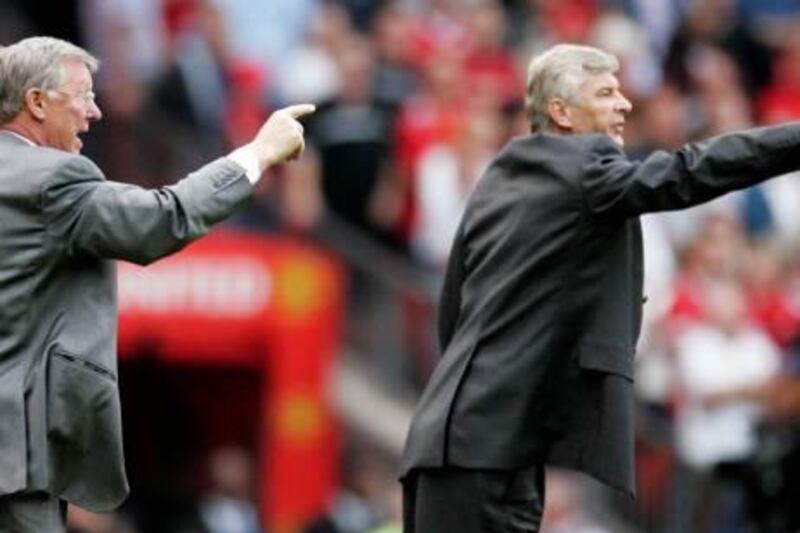I don't like how the 4-4-2 formation has fallen from favour in football. Pundits openly criticise it and accuse it of being outdated. I'm told that one manager's position was under threat because he persisted in playing 4-4-2. Unbelievable.
Too many teams are trying to play like Barcelona. That's the fashionable thing to do. It's one thing admiring them - and I do greatly, because they're the best team in the world - it's another trying to emulate them. There's only one team who can play like Barcelona and they play their home games at Camp Nou. No other team has Xavi and Iniesta with Messi just in front of them and Pedro and David Villa either side.
Manchester United tweaked their style in two Champions League finals against Barca but never came close to winning either. United started well in both finals, but played with an intensity that is difficult to maintain for 10 minutes, let alone 90.
In both games, Barcelona drew United out, enticed them and made them think that they had a chance. United chased every single ball for that opening spell but it was an impossible tempo to keep up. Barca took control and then - bang, bang, bang - they killed the game.
Arsenal are Barcelona-lite and do very well at that - until they meet the real thing. When Arsenal have tried to match the Catalans, they've lost because Barcelona have better players who have grown up in that system and would be ill at ease playing in any another formation. They have the confidence to make a pass to a player with three men marking him. That player, in turn, has the skill not to lose the ball, while freeing up space for others to exploit. That would never happen in England.
I wouldn't expect Arsenal or Barcelona to play a 4-4-2, nor to hit long balls in the air to their short players, just as Stoke City shouldn't try to play football on the floor. Certain systems work for different teams and Stoke have made great use of a long balls to big front men. They play to their strengths and that's what every team should do.
I was a fan of the Ajax 'total football' method of making every player play in every position as they develop so that they can see the game from the perspective of others, but that's unique to them.
And what's unique to English football is 4-4-2 when played well. It was how I liked to line up when I was at United and it's still the system the manager uses when he plays his strongest team. We won the treble that way in 1999, with David Beckham on one wing and Ryan Giggs on the other, Roy Keane, Nicky Butt or Paul Scholes as the middle two, with two from me, Dwight Yorke, Teddy Sheringham and Ole Gunnar Solskjaer up front. It was a centre forward's dream.
Just before I arrived at United, the team had Andrei Kanchelskis, Lee Sharpe and Ryan Giggs to choose from on the two wings.
United tinkered with the system in the early part of the last decade and started playing a 4-5-1 system in the belief that was needed to win the Champions League again, yet when United next won the competition in Moscow it was with a 4-4-2 system, albeit against an English club in Chelsea. It's what United do best and what most English clubs do best. English players grow up playing 4-4-2 and have done well with it. It's not rigid like some suggest.
I've played as the only striker in a 4-5-1. That role is known among forwards as the graveyard shift because it's almost impossible. You hardly get a touch of the ball. If you play for a weaker team away at a stronger team then you might be inclined to play a 4-5-1 in the hope of getting a draw, but don't expect goals. Playing in a 4-5-1 when you are the stronger team can be better as the two wide midfielders get forward, but isn't that a 4-3-3?
Play as a 4-4-2 and you feel very much part of the action, part of a system and the front two can complement each other, one going short for the ball and the other staying further forward.
The search for continental sophistication has put 4-4-2 firmly out of fashion, but I'm not convinced. Players like it, fans like it and, as you might have guessed, I like it.
Andy Cole's column is written with the assistance of European football correspondent Andy Mitten





